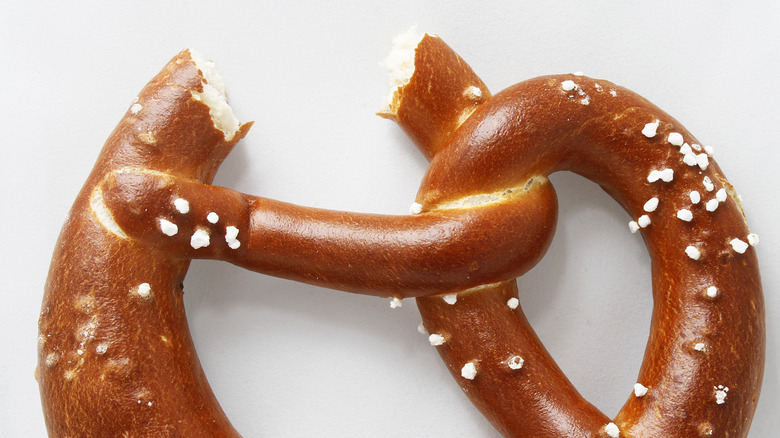Why Some Believe The Maillard Reaction Should Be Renamed
Anyone who loves food should give profound thanks for the existence of the Maillard reaction. The Maillard reaction not only causes an attractive browning effect in food, but creates a host of wonderful flavors and aromas, while also changing texture and consistency, too (via Chemistry World). Such thanks is rarely expressed, however. If chemical reactions had feelings, the Maillard reaction's would undoubtedly be deeply hurt. It's not personal, of course, it's just that it's a really complicated concept to try to wrap one's head around. Heck, even the guy who's name is attached to the reaction didn't really understand it all that well.
That would be Louis-Camille Maillard, the French chemist, who in 1912, was the first to discover that something delightful happened when simple sugars and amino acids reacted at high temperatures, according to Chemistry World. Maillard's discovery, published in the proceedings of the French Academy of Science, identified the chemical reaction and its effects. However, the complex processes behind it weren't really understood until more than 40 years later, when American chemist, John E. Hodge, realized there was more than one reaction at work, per Smithsonian Magazine. A complicated series of interrelated reactions were occurring.
Hodge identified three stages and seven distinct steps to the Maillard reaction, but even he didn't fully grasp the immense complexity of processes that turned sugar and amino acids into melanoidins (compounds which illustrate the browning effect in food), Smithsonian Magazine observes. An eighth step was confirmed in 1986, per the Journal of Proteome Research.
Why John E. Hodge deserves credit
"Maillard discovered the reaction, but [John E.] Hodge understood it," noted Vincenzo Fogliano, a food chemist at the University of Naples, in Chemical & Engineering News. Fogliano is one of many in the scientific community who have suggested that since Hodge, an African American chemist, was responsible for a more in-depth understanding of the mechanisms behind the Maillard reaction, it's his name that should be given to the reaction.
However, it's not just that Hodge's understanding surpassed Louis-Camille Maillard, so too has his influence. Hodge's pioneering paper on the Maillard reaction in 1953 was later named a Citation Classic, according to the Garfield Library's Science Citation Index at the University of Pennsylvania. Meaning, Hodge's work has been heavily cited by those engaged in scientific research. Since the original publications, Chemical & Engineering News confirms that Hodge's citations in food science research have vastly exceeded those of Maillard.
The name change idea hasn't gained enough traction as of yet, per Fogliano in Chemical & Engineering News, but who knows? Maybe food scientists of the future will be citing the Maillard-Hodge reaction — the name suggested by Smithsonian Magazine – or simply the Hodge reaction.

